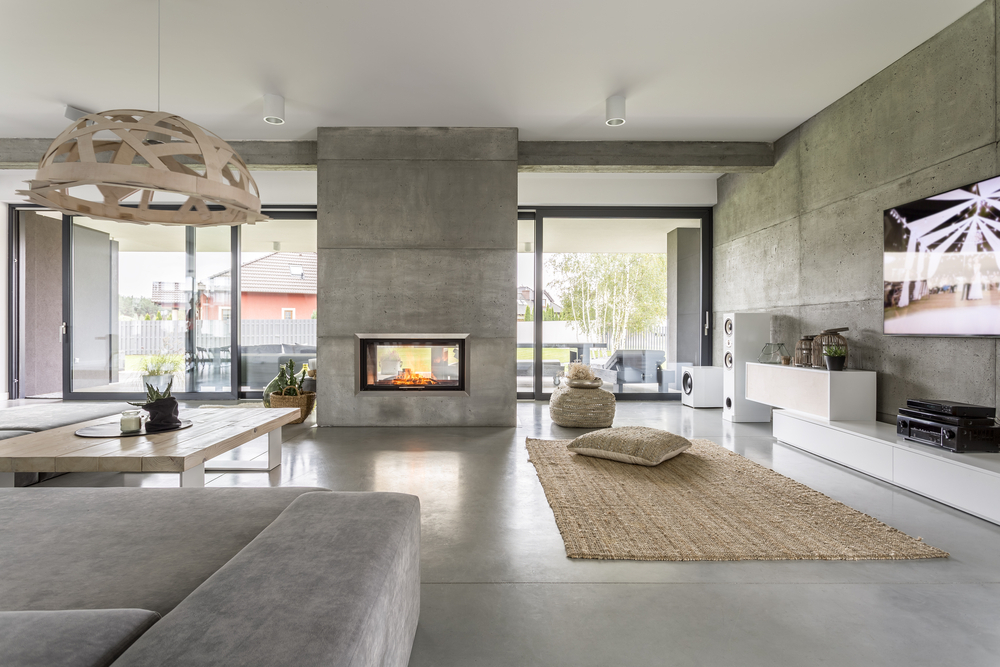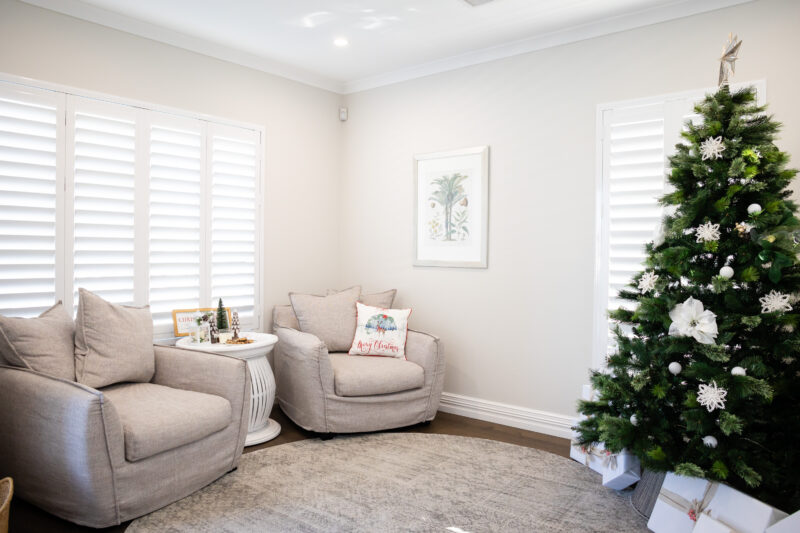What is interior design?
Interior design is about improving the interiors of homes and buildings to boost liveability, health and wellbeing, and aesthetics. While professional interior designers can help you plan and carry out a decoration or build project systematically, you can also undertake your own interior-design improvements. Knowing the basic principles of interior design is a good starting point. Here, we outline the seven principles of interior design and offer practical strategies for applying them to your new home build project.
The seven principles of interior design
1. Balance
Introducing balance into the equation gives your spaces a sense of equilibrium and symmetry. Think about the visual weight of the things, objects, and elements in each room. It’s not only the size of the object but its shape, colour, texture, and pattern. Black things will have more visual weight than grey and pastel items. A cushion with a loud, eye-catching pattern will have more visual weight than one in soft florals.
There are three different types of balance in interior design. First, radial balance is having other elements radiate in a circular symmetry around a focal point. Second, asymmetrical balance creates a more natural sense of balance by keeping the focus on the central imaginary axis and arranging unlike and oddly numbered objects around the axis. Finally, there’s the traditional symmetrical balance, where you place objects symmetrically around a focal point or central axis.
For example, you could start with the focal point of the space. This could be your television, a large painting or sculpture, or a major furniture item like a grand piano. To equalise the visual weight of items in the room, evenly set objects on either side of this focal point and make sure each side has more or less the same visual weight. By paying attention to balance, you’ll end up with an aesthetically pleasing space that’s even and steady and offers visual harmony.
2. Rhythm
Rhythm in design, as in music, is about patterns of repetition as well as contrast. Colours, shapes, and textures can be used at varying intervals to general visual interest with a theme, unify the space, and guide the gaze around the room.
A simple example is using the same colour in your cushion, in a painting, lampshade, and window furnishings for straightforward repetition around the room. You can also create rhythm by alternation, such as using different coloured lights in an ABCABC or ABBABB pattern. Progression rhythm, on the other hand, is more complex and involves ascending or descending elements based on colour, size, or other features.
3. Contrast
Contrast is another fundamental principle, and it involves combining two or more entirely different elements in the space. This could be colour, form or shape, and space. Contrast catches the eye immediately and is a powerful way to generate visual interest.
For example, you could use contrasting colours like white and black to create contrast. You could set off a square couch with a round coffee table. Setting off positive (occupied) space with negative (empty) space is another great way to create contrast in your rooms. Mix and match modern textures like steel and chrome with natural fabrics and woods. Add flair with fun prints and colourful accents.
4. Harmony
Harmony in interior design means creating a feeling of uniformity or unity in your spaces. This could include using similar colours, patterns, and textures. The ideal effect is achieved when you walk into a space and feel like everything fits together and things complement each other and are placed where they should be. A sense of tranquillity, cohesion, and balance is the outcome.
Harmony in your room could also be created by using the same spacing between furniture and other objects. Repetition for visual consistency is another way to introduce more harmony into your spaces. You could repeat the same patterns, textures, and colours around the room.
5. Focal point
Spaces where objects have the same visual importance project a feeling of boredom or even confusion. To avoid a scattered, unfocused atmosphere, it’s vital to have a focal point, which serves as a visual anchor.
This can be your fireplace, a feature window with views, a piece of art, an accent wall, a grouping of furniture items, or a large piece of furniture, such as a sofa. You can emphasise your focal point by setting complementary furniture items around it or by echoing its colours, textures, form, or patterns throughout the room. You can also use lighting to highlight your feature item.
6. Proportion and scale
Proportion and scale refer to how the size of different objects relate to each other in your space. At a basic level, the size and dimensions of the things in your room should relate proportionally so items and pieces don’t look out of place.
For example, you can create a sense of proportion and scale by using small or embedded lighting in a tiny space and by saving the big feature chandelier and large furniture pieces for the larger rooms with high ceilings. At a basic level, you can also make sure furniture items like chairs and tables relate to each other proportionally so individual furniture pieces look out of place in terms of size, unless it’s a focal or statement piece.
7. Details
The principle of detail in your spaces means even the smaller things should not be overlooked. In other words, from the handles on your drawers and cabinets to the embroidered cushions on your couch, the little details always add something extra to your space’s overall theme. Adjusting and refining these can turn your room into a truly interesting space.
You can add detail by paying attention to the colours, fabrics, materials, styles, and products you choose. Matching the wood carving in your furnishings and doors, using the same floral themes in your rugs and cushions, and choosing the same pastel shades for your curtains and sofa throws are ways to introduce granular details into your house.
Conclusion
The principles of balance, rhythm, harmony, and proportion and scale help create a sense of coherence in your interiors. To add interest, create a focal point and pay attention to even the smallest details. When you’re aware of the basic interior design principles, you can turn any dull, bland space into a visually engaging one. Your rooms will make a great impression on visitors, and they’ll become lively, pleasing spaces to spend time in. With some experimentation and practice, you’ll be able to apply these principles successfully and design spaces that reflect your aesthetic values and personality.
IIf you’re looking for more ideas and inspiration for your interior design and new build projects, visit our extensive Interior Design guide , or we at Plunkett Homes invite you to come and explore our well-designed houses. Explore our designs online or visit our showrooms in person to experience trending designs in real-time. If you have any questions, contact our friendly team now and we’d be more than pleased to assist you.




